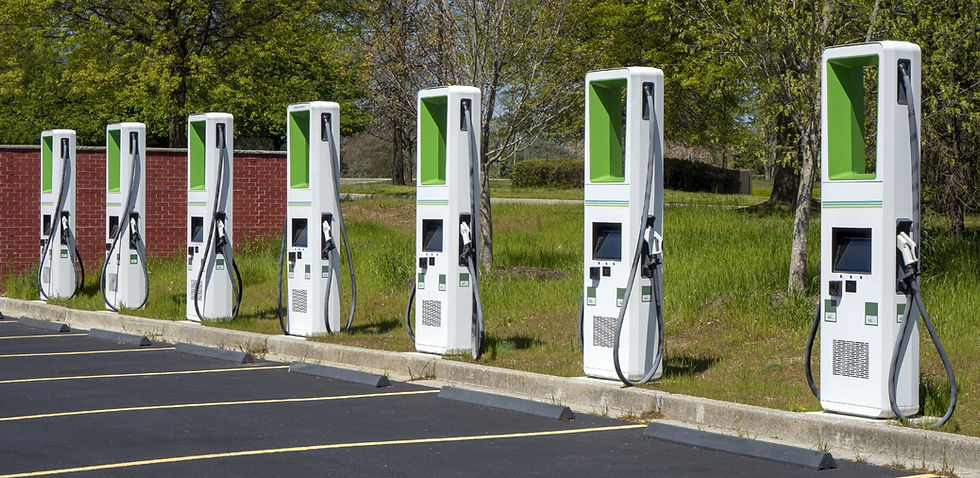GEMM June Newsletter
- Pragatie
- Jul 1
- 4 min read
Keeping you up-to-date on the latest in renewable energy and sustainability.
Property Based Financing Around the World
Property-Assessed Clean Energy (PACE) financing got its start in Berkeley, California in 2008. Commercial PACE (C-PACE) followed in 2009. Fast forward to 2025, and 30 states & Washington, D.C., have active C-PACE programs. Eight additional states have enabling legislation.
What about beyond U.S. borders?
Canada and Australia have active programs similar to C-PACE. South Africa is exploring property-based financing as a way to promote green energy. The United Kingdom, in partnership with the Green Finance Institute, is developing its own version. Spain already has a pilot program in place.
In Europe they often refer to this as Property-Linked Financing (PLF) and the intent is for this type of financing to be used for both residential and commercial green energy projects.
The PLF in Europe offers many of the same benefits as C-PACE:
No Upfront Costs: Property owners can undertake energy improvements without the need for initial capital investment.
Long-Term Financing: Repayment terms extend over 15 to 30 years, aligning with the lifespan of the improvement.
Transferability: The charge is attached to the property, not the owner, allowing it to transfer with the property upon sale.
Alignment with Climate Goals: PLF supports the EU's objective of achieving a zero-emission building stock by 2050.
The different PLF in different locations/countries does vary, much like C-PACE varies from state to state. Some in the industry feel it is taking a long time for PLF to take hold in Europe, but it’s only a matter of time until decision makers realize that the benefits outweigh the reluctance to change.
NYC’s Local Law 97 Deadlines Extended

As New York City’s landmark building emissions law moves into its first reporting year, the City has granted additional flexibility for owners working toward compliance. For many, 2025 will be the first time reporting under LL97 and with it, some understandable confusion.
Here’s what’s new:
Extension Now Available: Building owners may now request an extension to file their LL97 compliance report. If approved, the deadline moves from June 30 to December 31, 2025.
No Professional Attestation Required for Extensions: Submitting the extension request does not require a professional attestation.
Already Filed an Extension? You're covered—previously submitted extensions automatically extend the deadline to December 31.
Reporting for LL88 and LL97? If your building must file both, the same extended deadline (December 31) applies—as long as an LL97 extension is requested. Otherwise, both are due June 30.
LL88-Only Buildings: Still has a hard deadline of June 30, 2025.
LL88 Compliance Plans Accepted: For 2025, you can meet LL88 obligations by submitting a compliance plan. Keep in mind: the plan doesn’t remove your responsibility to complete the work ad noncompliance still leads to annual penalties.
Good Faith Mitigation Pathways: Buildings applying for LL97 penalty mitigation under Article 320 or 321 may also use an LL88 compliance plan to meet this year’s LL88 filing requirement. Article 321 applicants have until their LL97 deadline (including extensions) to submit their project commitment letter.
See NYC Official Service Notice Here: https://www.nyc.gov/assets/buildings/pdf/ll97compliance-ext-sn.pdf
New Jersey’s C-PACE Program Launches: What Property Owners Need to Know
In August 2021, Governor Phil Murphy signed legislation authorizing the establishment of a C-PACE program in New Jersey. Since then, property owners and developers have been eagerly waiting for access to these funds.
The New Jersey Economic Development Authority (NJEDA) was tasked with creating the program, and in October 2024, the Garden State C-PACE Program was officially approved.
As with most C-PACE programs, local municipalities must opt in. The NJEDA has released documents outlining the opt-in process on their website: www.njeda.gov/cpace
As of June 2025, the following municipalities have opted in:
City of New Brunswick
Oldmans Township
City of Plainfield
Township of Woodbridge
Be ready to implement energy improvements as soon as your municipality opts in!
Electric Vehicles in the Lehigh Valley

Driving around the Lehigh Valley—GEMM’s hometown—we’ve noticed a steady rise in electric vehicles. But with more EVs on the road, the big question is: Where is everyone charging up?
Public chargers are becoming a more familiar sight. Whether at grocery stores, office parks, or municipal lots, EV infrastructure is quietly expanding—and showing up in places you might not expect. It’s a clear signal that the region is preparing for an electric future.
Thinking about installing EV chargers at your business? There’s more to it than just plugging in. The type of charger you install impacts both cost and charging time:
Level 1: Standard outlet, charges in 11–20 hours
Level 2: Faster, charges in 3–8 hours
Level 3: (DC Fast Charging): Rapid charge in 30–45 minutes
Choosing the right system depends on your energy needs and existing electrical infrastructure. That’s why it’s essential to work with a qualified professional during planning.
As more chargers are added, communities also need to think about the bigger energy picture. While EV chargers aren’t the sole cause, regions across the country have seen rolling blackouts during periods of high electricity demand.
That’s why GEMM recommends taking a masterplanning approach—evaluating all energy upgrades together to optimize building performance, ensure reliability, and plan ahead for a cleaner, smarter grid.
Stay connected
We're excited to continue this journey with you, by sharing news and insights on sustainability and progressing our path toward a better future. Stay tuned for our newsletter next month.




Comments